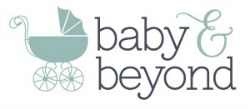NEWBORN SETTLING
By our Christchurch and North Canterbury Sleep Consultant – Paulette
The “5 S’s” are settling techniques described by Dr Harvey Karp in his book “The Happiest Baby on the Block”. Swaddling, side/stomach settling, shushing, swinging and sucking. I love to add a 6th “S” – “Skin-to-skin”.
Babies have different temperaments, and some are fussier than others. Baby A may need only one of the techniques described as the “5 S’s” to calm and settle him – he’s a pretty easy-going chap and only needs a little help. Baby B, however, is sensitive to every little thing – he startles easily and gets himself wound up and unable to calm down without all 5 S’s assisting him. It might also be different based on different caregivers, a more experienced one might be confident to settle a baby with less whereas another caregiver might feel the need to use more S’s
The 5 S’s need to be used in a layered-on approach to work well with a screaming baby. First swaddle the baby to prevent startling and to get his attention. Next lay him on his side or stomach. Turn on a loud white noise or make a loud Shhing sound close to his ear. Jiggle baby in rhythm with his crankiness. Start with fast, tiny movements that wobble his head a little. “Dance” with baby, rocking, swinging, patting, whatever works best. Once he is quiet enough give him a dummy/paci to suck on. Continue to calm him as he falls asleep, then lay him on his back to sleep.
By 3 months most babies can start to wean off the 5S’s and learn to fall asleep on their own. Swinging is the first prop to go. If using a mechanical swing, turn it onto the slowest speed now, instead of the fastest. Between 4 – 6 months is a good time to ditch the dummy. It is easier to do now than when the baby is older and has formed an emotional attachment to it. After around 4 months you can try easing out of swaddling. Begin by leaving one arm out – if this causes waking leave it for another month. If all goes well, try putting him to bed unwrapped. By this age he may be able to begin sucking his fingers to self-soothe. White noise is the last to go, usually at around 12 months, and is easily diminished by simply turning the volume down gradually over a week or two.
Photo credit: www.facebook.com/Shoshannah.Nz
LET’S TALK SWADDLING
3 Benefits to Swaddling:
- a) Swaddling gives a baby the constant feeling of touch. Touch is essential for babies, and being swaddled gives her this comforting experience during the times she is not being held in your arms – an artificial cuddle!
- b) Tucked cozily and compactly in the womb, baby has very limited ability to move his arms around. Once in the big, wide, world, he can also fling his arms wide. This tends to alarm babies, sometimes triggering the Moro reflex – he reacts as if he is falling. Striking himself in the face is also going to upset him. Swaddling keeps him in womb-like restrictions, preventing flailing around and upsetting himself.
- c) Being cozily wrapped in a swaddle allows a baby to focus on the other calming, soothing things you are doing. She can switch off all the distractions of her self-startling and notice your quieting efforts.
3 Common Misconceptions of Swaddling:
- a) Babies might be uncomfortable with arms tightly down at their sides. Although babies’ arms tend to bend into an “up” position, they really do calm right down and sleep an extra long time when swaddled arms down. This might also help replicate other times when babies are sleeping well e.g in parents’ arms, in a car seat or baby carrier.
- b) Wrapping may make a baby feel trapped. Babies are used to being firmly confined in the womb. Swaddling mimics this familiar environment, preventing him startling himself.
- c) Wrapping frustrates an infant’s attempts to suck her fingers. Small babies are unable to bring their fingers into their mouths for a comforting suck, especially when they are flailing around as they cry. It will take 3 – 4 months for a baby to master this technique, and by then swaddling may be unnecessary.
One caution: Some recent studies have linked swaddling with hip dysplasia. To prevent this ensure baby’s legs can move freely in the swaddle.
SIDE/STOMACH SETTLING and THE NEWBORN CALMING REFLEX
Side and stomach settling trigger the baby’s calming reflex by making him feel like he’s back in the womb. The position he spent most time in during late pregnancy was (normally) on his side, head down, curled up with knees tucked into his tummy, “the fetal position” even adults find comforting. Position sensors in his head turn on the calming reflex.
The “Moro” reflex happens when a baby is laid on his back, unswaddled – his arms fling out and he gets a fright. At this age it is very supportive to keep your baby’s arms held in by his chest, and lying on his side or stomach.
To settle an upset baby, after swaddling, cuddle him in your arms either lying on his side, or over your arm on his stomach. You can also lay him on your lap face down with his stomach over your legs. This can be a great position for burping, too.
Due to an increased risk of SIDS, putting a baby to sleep on his side or tummy is NOT recommended. Safe sleep advice is to put him to bed on his back. Therefore, settle him in your arms or on your lap before laying him on his back in bed. If you are settling him in his bed you can lay him on his side, but once he is calm you must roll him onto his back for sleeping.
“SHHING” AND WHITE NOISE
“Shhing” sounds like the familiar environment of the womb because the blood rushing through the blood vessels is very loud in the womb.
White noise imitates the “shhing” sounds of the womb. It helps babies calm down and when played during naps and nights, sleep longer. Many household appliances can be used to make white noise, or you can buy white noise machines or download apps designed for the purpose. When calming a frantic baby, loud “shhing” from your own mouth is also effective.
The noise in the womb is very loud: 80 – 90 decibels – louder than a vacuum cleaner! Because the baby’s ears are blocked by fluid and vernix, and the eardrums are thick and inefficient, the sound is muffled. His hearing is still imperfect for the first few months after birth, when the eardrum thins. White noise, therefore, needs to be loud to be effective – especially if the baby is crying and making a lot of noise himself. Gradually increase the volume to see how he responds.
To wean a baby off white noise, simply lower the volume gradually over 1 – 2 weeks. This can be done by 3 or 4 months of age, but it is recommended it continue for naps and night sleeps until 12 months or longer. It can be helpful for restless nights with teething and growth spurts.
SWINGING AND OTHER MOVEMENT TO CALM A BABY
Swinging, jiggling movements imitate the womb environment, activating the calming reflex by turning on motion sensors in the baby’s ears. Many rhythmic actions help to calm babies, from slings to swings, patting, jiggling, walks and car rides. For calming a fussy baby, the swinging needs to start out fast and jiggly. His head needs to wiggle more than his body, so cup your hands a little loosely around his head. Follow the baby’s lead as to how vigorous your rhythmic jiggling should be. As his cries get less and he begins to calm, reduce your pace accordingly. Jiggling motions are fast and tiny – NEVER SHAKE A BABY.
To settle a crying baby in a bassinette: Swaddle the baby and lay him on his side in the bassinette. Holding the bassinette on the side, near his head, jiggle it quickly, like you’re shivering, making his head wiggle like jelly. Make a loud “shhing” or turn on some white noise. After he is calm roll him onto his back for sleeping.
BABIES SUCK TO CALM
Psychologists recognise sucking as a calming process for babies. Older children and adults experience the same deep calming with similar activities (e.g. licking a lollipop). It lessens stress and has pain-relieving qualities. Recent studies have shown that pacifiers may help prevent SIDS/SUDI.
Ensure breastfeeding is established before introducing a dummy/pacifier.
When using a dummy/pacifier a baby will indicate hunger by continuing to cry after sucking for a minute or two, searching for the nipple when you touch her face, eagerly drinking when offered milk. If she isn’t hungry, but just needs to suck, she will suck contentedly on the dummy. This can be helpful to soothe a baby when she is upset.
To use reverse psychology to help a baby keep the dummy in her mouth, tug at it as soon as she has a good suck going. She will suck harder to resist losing the dummy. Repeating this process 10 – 20 times whenever you give her the pacifier for a few days will train her to keep a firm grip, reducing the need for an adult to replace it often.
Babies from 7 – 8 months old can be taught to find and replace their own dummies. Up until that time the dummy can become a hindrance, if you need to pop it back in every time she stirs between sleep cycles.
Dummies/Pacifiers can be a helpful tool to soothe a crying baby and help her fall asleep and sleep longer. They can, however, be a problem if they become a sleep association needing parental help to find and replace.
SKIN-TO-SKIN
Here is my 6th “S” to add to Dr Harvey Karp’s “5 S’s” to help settle a young baby. There is no place your newborn would rather be than cuddled up as close to you as possible! Placing your baby skin to skin on your chest has numerous proven benefits, not only straight after birth, but any time. Also known as “kangaroo care”, there should be no clothing, blankets or wraps between the two of you. Place a blanket over the top to keep you both warm, and the warmth of your body will keep baby nice and snug. Having a bath or shower together is another nice way to calm your baby with some skin-to-skin time – as well as the soothing influence of the water.
Skin-to-skin is a beautiful bonding time for the two of you, and can be practiced by either parent, decreasing stress in both parent and infant.


